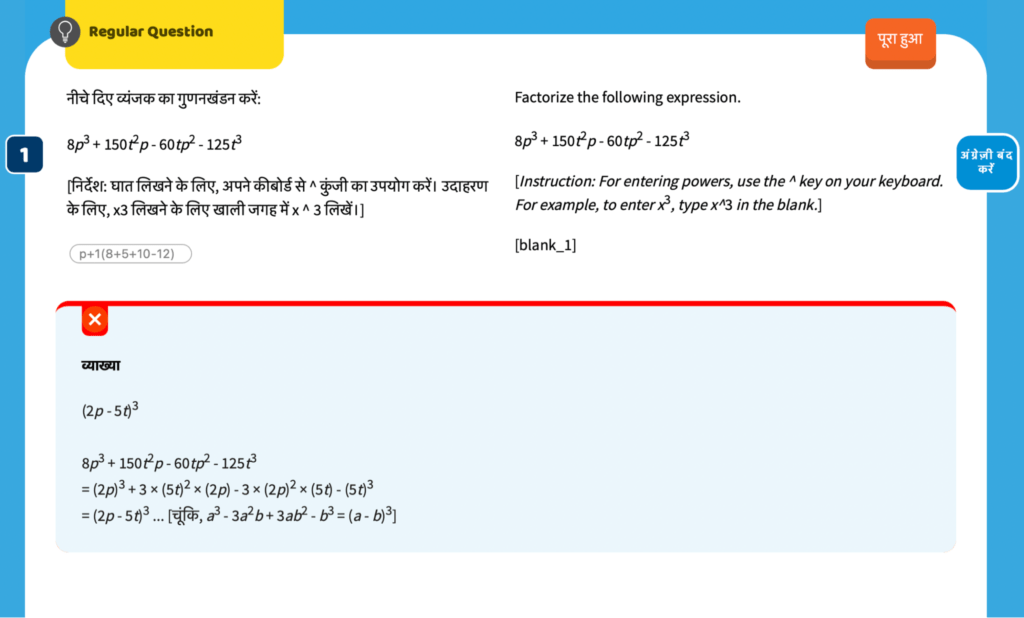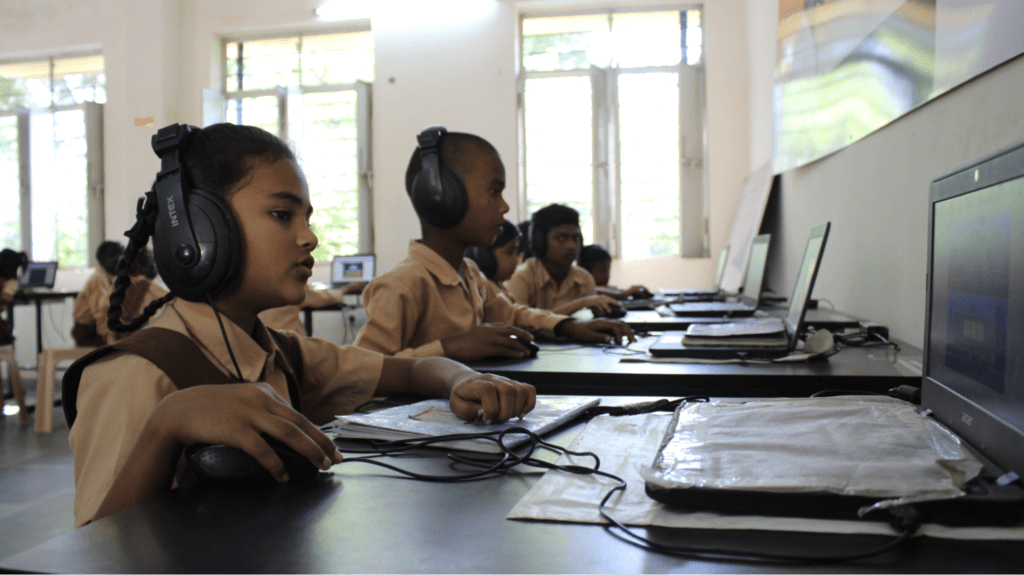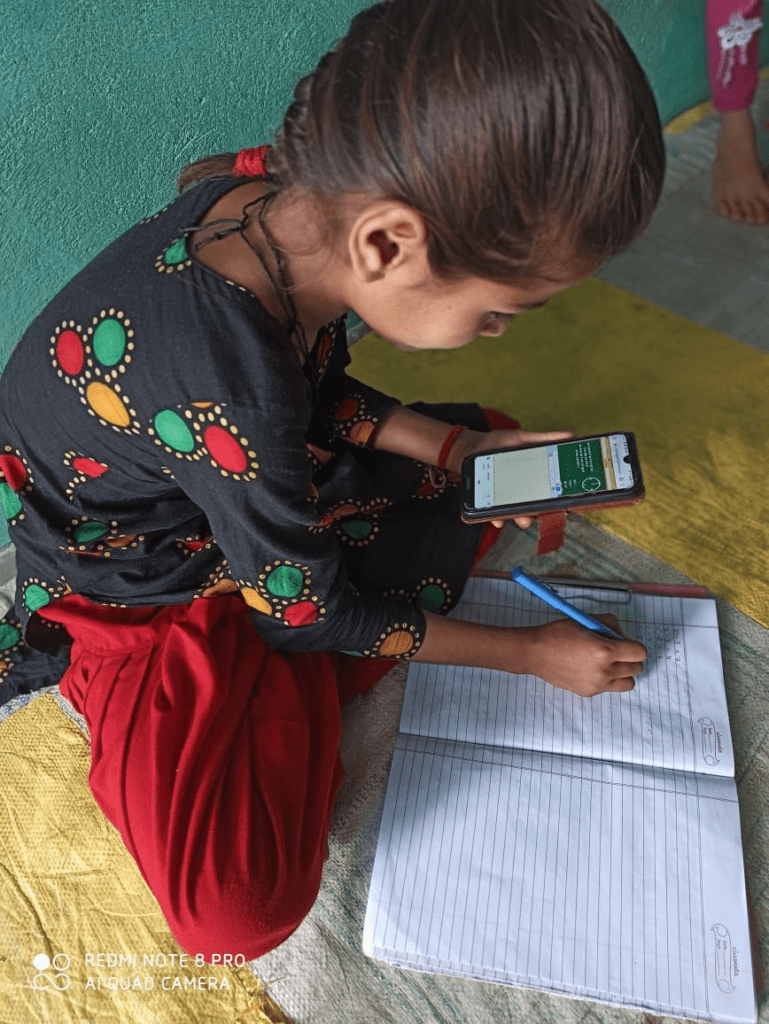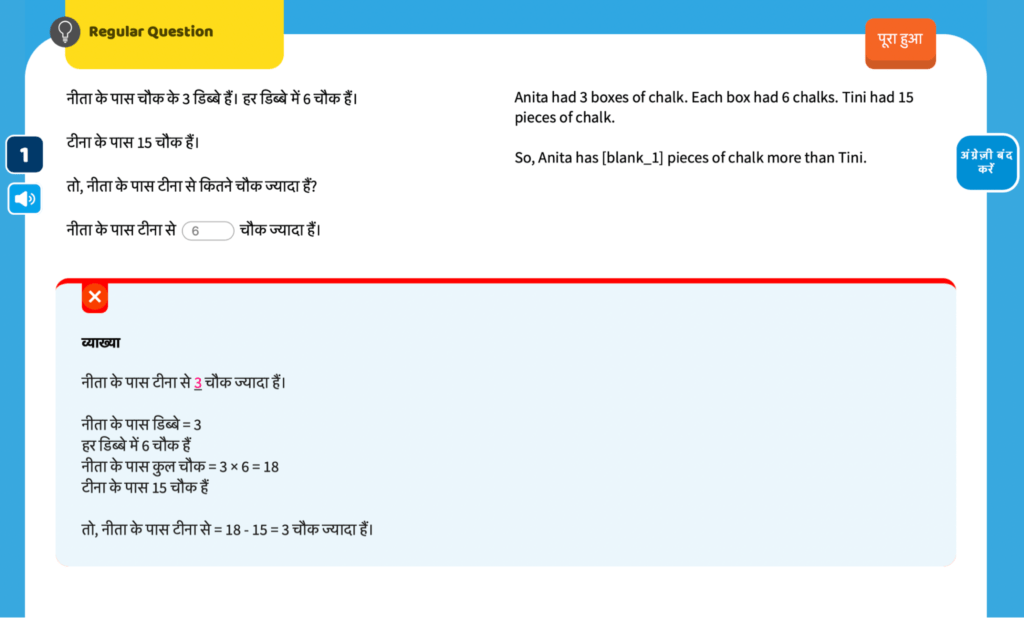To say that India’s children have suffered in this pandemic is an understatement. While the country opened up and shut down in waves, schools have by and large remained closed. Students, especially those without access to high-quality remote learning content, will have suffered learning loss. The long-term impact will likely be severe; a June 2020 World Bank study estimated that South Asian students will lose $5,813 (USD) in lifetime earnings on average due to school closures, amounting to an $800 billion loss for the region. Avoiding this will require personalised instruction for students, where they are taught as per their specific needs. Technology can help enable this in a scalable yet affordable manner.
Such interventions are especially relevant because, though the pandemic did not spark India’s learning crisis, it definitely worsened it. A report by the Azim Premji Foundation estimated that, during the pandemic, 82% and 92% of Indian students had lost at least one specific ability in Mathematics and Language, respectively. Those on the wrong side of the digital divide will have suffered more, compounding existing socio-economic inequality.
This unequal impact will worsen pre-existing diversity of learning levels within grades. Research by Karthik Muralidharan and Abhijeet Singh from 2019 shows that before the pandemic, learning levels among students enrolled in Grade 8 ranged from those expected of students anywhere between Grades 2 to 8. Identifying and addressing individual student needs was challenging even for highly motivated teachers, and will only be more so as schools reopen amidst the ongoing pandemic. Those performing below expected grade levels may consequently fall further behind despite attending in-person classes.
Learning remediation can ensure that India’s students suffer minimal educational and economic consequences. That is, in order to catch up, students must be taught content they did not understand earlier or, due to school closures, that they forgot. “Teaching at the Right Level” (TaRL) is one method that can effectively do so. Here, students are taught based on their actual learning level, not that of the class they are enrolled in. For example, students enrolled in Grade 5 who can only understand Grade 3 mathematics would be taught according to their current abilities, not those expected of them. This helps students learn at their own pace and catch up to expected learning levels for their grades over time.
Tech and TaRL for Effective Learning At Scale
Implementing TaRL at scale through in-person instruction is challenging because it places great demands on teachers, who are already considerably burdened. Their priority is, understandably, to complete the syllabus for a grade during the school year. Additionally, government school teachers are frequently given administrative tasks and co-opted for non-school work such as election duty. Furthermore, especially in rural areas, teachers often teach multi-grade classrooms—or classrooms where students “are heterogeneous in both age and ability”—which further complicates attempts at in-person teaching at the right level for each student.
Yet, if supplemented with technology, it is possible to implement TaRL at scale in a cost-effective manner, even in capacity-constrained environments. Personalized Adaptive Learning (PAL) programmes, in particular, can do so. Mindspark, by Educational Initiatives (Ei), is one such software that tailors teaching material for students based on their learning ability. Students who use the programme first undergo screening tests, based on which their learning levels are diagnosed for each subject offered. They are then presented with questions, games, and activities corresponding to their learning levels in each discipline.

The software records each response and adjusts subsequent questions accordingly. If a student gets a question wrong, they are shown the correct answer and explanation. This is followed by more questions that test the same concept to gauge whether they have understood it. If a student gets multiple questions wrong, then the software dynamically modifies their learning path to a lower level. Alternately, on getting numerous questions correct, the software presents students content at a higher difficulty level. In this way, students can also access advanced content if they can understand it.
Mindspark’s interface is gamified to increase engagement; students are given digital rewards called ‘Sparkies’ for good performance. All usage data is collated on a dashboard accessible by teachers. They can use this nuanced information on student learning levels and common misconceptions to improve in-class instruction as well. Schools and government education departments can also analyse aggregated data to identify and address systemic weaknesses through teacher training and pedagogical improvement.
The Proof for PAL
The efficacy of such programmes has been proven through rigorous evaluations. In 2016, the MIT-affiliated Abdul Latif Jameel Poverty Action Lab (JPAL) conducted a randomised control trial (RCT) studying the impact of Mindspark in after-school centres in Delhi’s slums. Over 18 weeks, learning gains doubled in mathematics and Hindi for Mindspark users relative to non-users. Crucially, academically weaker students using Mindspark improved the most relative to their non-user counterparts, whose rate of learning was near-zero.

These learning gains also apply across age groups. While Mindspark was effective among middle-school students studying relatively complex topics, a study in Ecuador showed that even college-going students benefited significantly from similar interventions. In mathematics, students learned in six months what they would take a year to otherwise. In a review of 12 RCTs on PAL technologies from 2020, 10 showed ‘positive outcomes’ and two showed ‘mixed outcomes’. Importantly, both the Delhi and Ecuador studies highlighted that these interventions were cost-effective, requiring a fraction of the funds effective in-person interventions would. This makes them ideal to scale in resource-scarce settings.
Bridging the Digital Divide and the Path Ahead
These technologies possess clear potential to help both teachers and students achieve effective learning remediation in the coming months and years. Translating theory into practice, however, requires concerted effort. Regular access to technology among students is still far from universal in India—it is unlikely that children from disadvantaged backgrounds will be able to afford the devices required to partake in such programmes. Government schools remain the best conduit to reach them—while philanthropic capital has helped pilot interventions, it can’t achieve the scale that government systems can. Yet getting governments to fund ed-tech interventions remains difficult.
There are encouraging signs in this regard, however. COVID-19 accelerated the acceptance of digital learning, one of the few benefits of this otherwise catastrophic period for education. The 2020 National Education Policy’s emphasis on the “extensive use of technology in teaching and learning” is a further step in the right direction. Now, funding must follow rhetoric to ensure equitable access.
Beyond schools, access to digital devices for education (partly because of remote learning during the pandemic) has also grown. Pratham’s Annual Status of Education Report for 2020 showed a significant increase in smartphone access among children from rural areas. This figure grew from 35.1% in 2018 to 61.8% in 2020. One in ten households reportedly bought a smartphone to support their children’s education during the pandemic. This growth can be leveraged to increase access at home to PAL programmes. This isn’t just a theoretical possibility; Mindspark witnessed an almost three-fold increase in users from government schools when deployed remotely in 2020-21, relative to deployment in schools and after-school centres in 2019-20.

Successful implementation also requires consistent engagement from stakeholders at the last mile. Both governments and ed-tech providers must come together to bring schools, teachers, students and parents on the same page. Teachers, for example, may be sceptical about such interventions since they take time away from classroom instruction. Similarly, usage at home is often inconsistent because parents, who are gatekeepers of technology for students, may not be familiar with the benefits of such programmes. Most importantly, students themselves may not understand what they gain through usage, viewing it as additional schoolwork. The reservations of all these groups highlight the radical departures from schooling-as-usual that ed-tech represents. Extensive outreach, support and negotiation is crucial to address them and enable consistent usage.
Though the path forward is complicated, there also hasn’t been a better time for personalised adaptive learning to be deployed at scale. The pandemic triggered learning losses that need to be remediated, but simultaneously, it also increased comfort with digital learning. Access to technology may not be universal, but it is increasingly widespread and affordable. Importantly, investments in PAL interventions can establish the infrastructure that will be useful for more than just short-term learning remediation. They can help tackle deep-rooted causes and symptoms of our learning crisis, and create a system that enables equitable, effective, and economical learning for the long term.
Featured image: students using Mindspark during the pandemic at ‘Community Labs’ in Lucknow that team members periodically established in students’ localities; courtesy of Educational Initiatives.







